
Imagine owning furniture that not only looks stunning and adds character to your home but also withstands the test of time, lasting for generations. Teak wood, a versatile and resilient hardwood, offers just that. In this blog post, we will delve into the fascinating world of teak wood, discussing “does teak wood rot: clearing facts and myths,” uncovering the truth behind its resistance to rot, debunking myths, and exploring its various uses and environmental impact.
Key Takeaways
-
Teak wood is renowned for its natural resistance to rot due to its high oil and silica content, dense grain structure, and impressive tensile strength.
-
Common misconceptions about teak wood’s susceptibility to rot or need for regular maintenance are debunked in this article.
-
Alternatives such as PVC decks, Mahogany, White Cedar can help reduce the environmental impact of teak production while still providing similar durability benefits.
Teak Wood's Resistance to Rot
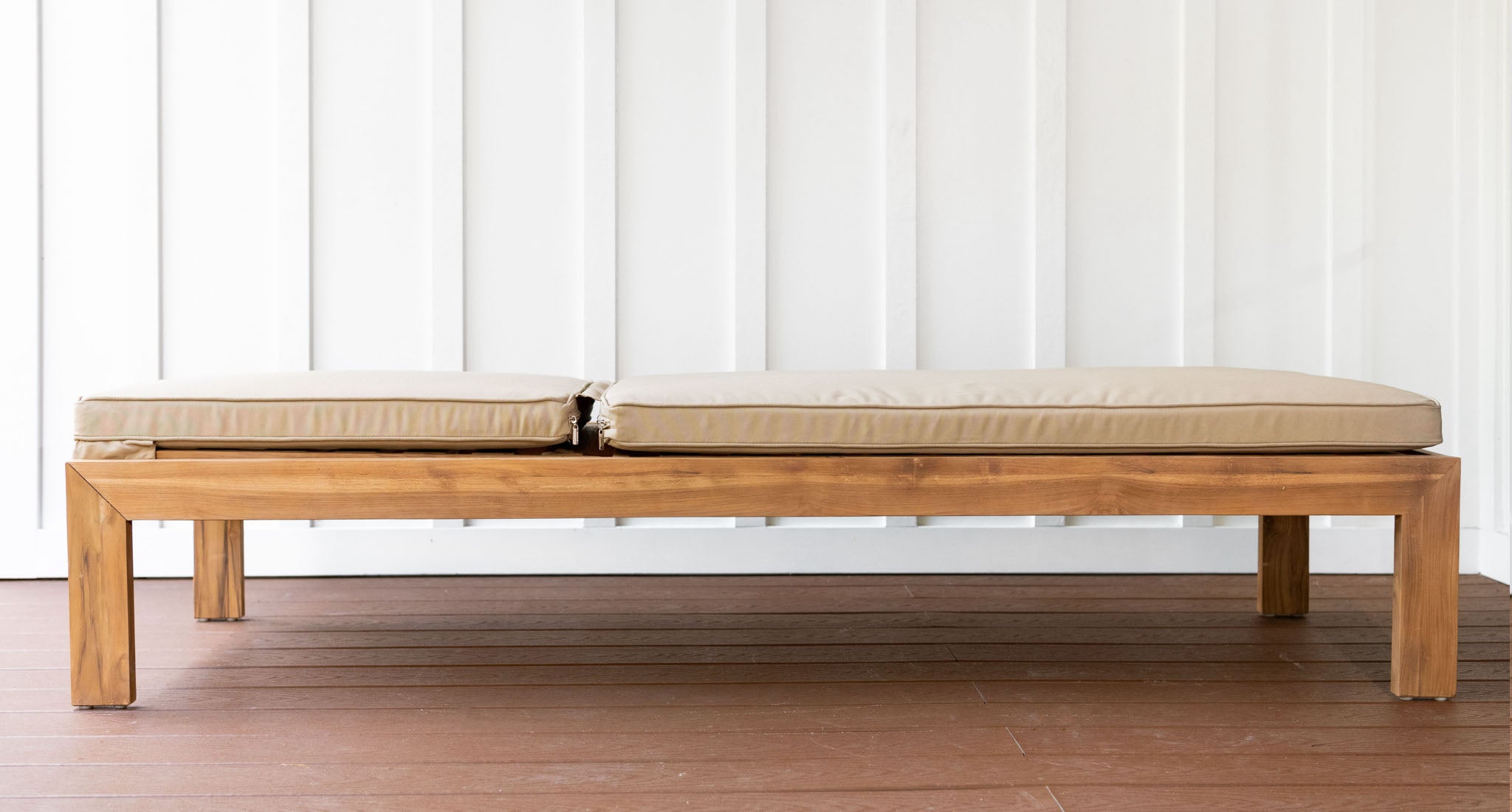
Teak wood, a durable hardwood derived from the teak tree (Tectona grandis) native to south and southeast Asia, is renowned for its strength, durability, and resistance to extreme weather conditions and rotting. This close-grained hardwood offers remarkable longevity, with some sources suggesting it can last for over 100 years.
What contributes to teak wood’s remarkable resistance to rot and how does it benefit our daily lives? Teak wood owes its robust resistance to rot to its unique amalgamation of natural oils, silica content, and a dense grain structure. We’ll now examine these elements and their contribution to making teak wood such a resilient and desirable material.
Natural Oils
Teak wood is blessed with an abundance of natural oils, such as silica and rubber, which protect it from rot, insects, and fungi. These oils, including teak oil, act as a natural deterrent, safeguarding the wood from:
-
water
-
pests
-
fungi
-
mold
This inherent resistance to the elements makes teak wood an ideal choice for outdoor furniture and boat building.
Teak wood boasts a notably higher natural oil content than other common woods used in outdoor furniture and boat building. This oil content not only increases the durability and resistance of teak wood but also contributes to its water resistance. With such an impressive array of natural defenses, it’s no wonder that teak wood is a popular choice for both indoor and outdoor applications.
Silica Content
The high silica content in teak wood, which can be up to 1.4%, plays a crucial role in its durability and resistance to rot and decay. Silica serves as a natural preservative, protecting the wood from moisture and pests. This impressive silica content also differentiates teak from other woods, making it a more durable and long-lasting material.
Despite its high silica content, which can cause tools to become dull, teak wood is relatively easy to work with. It glues and finishes well, making it an attractive choice for furniture making, even with its propensity to blunt cutting edges.
Dense Grain Structure
Teak wood’s dense, close-grained nature sets it apart from other types of wood, making it an excellent choice for the most durable garden furniture. This dense grain structure, coupled with its high natural oil content, makes teak wood highly resistant to rot and insects.
The average density of teak wood, which ranges from 0.65 to 0.98 g/cm³, depending on the type and origin, further adds to its strength and durability. This density makes teak wood suitable for various applications, including durable teak benches that can withstand the elements for decades.
Teak Wood Myths Debunked
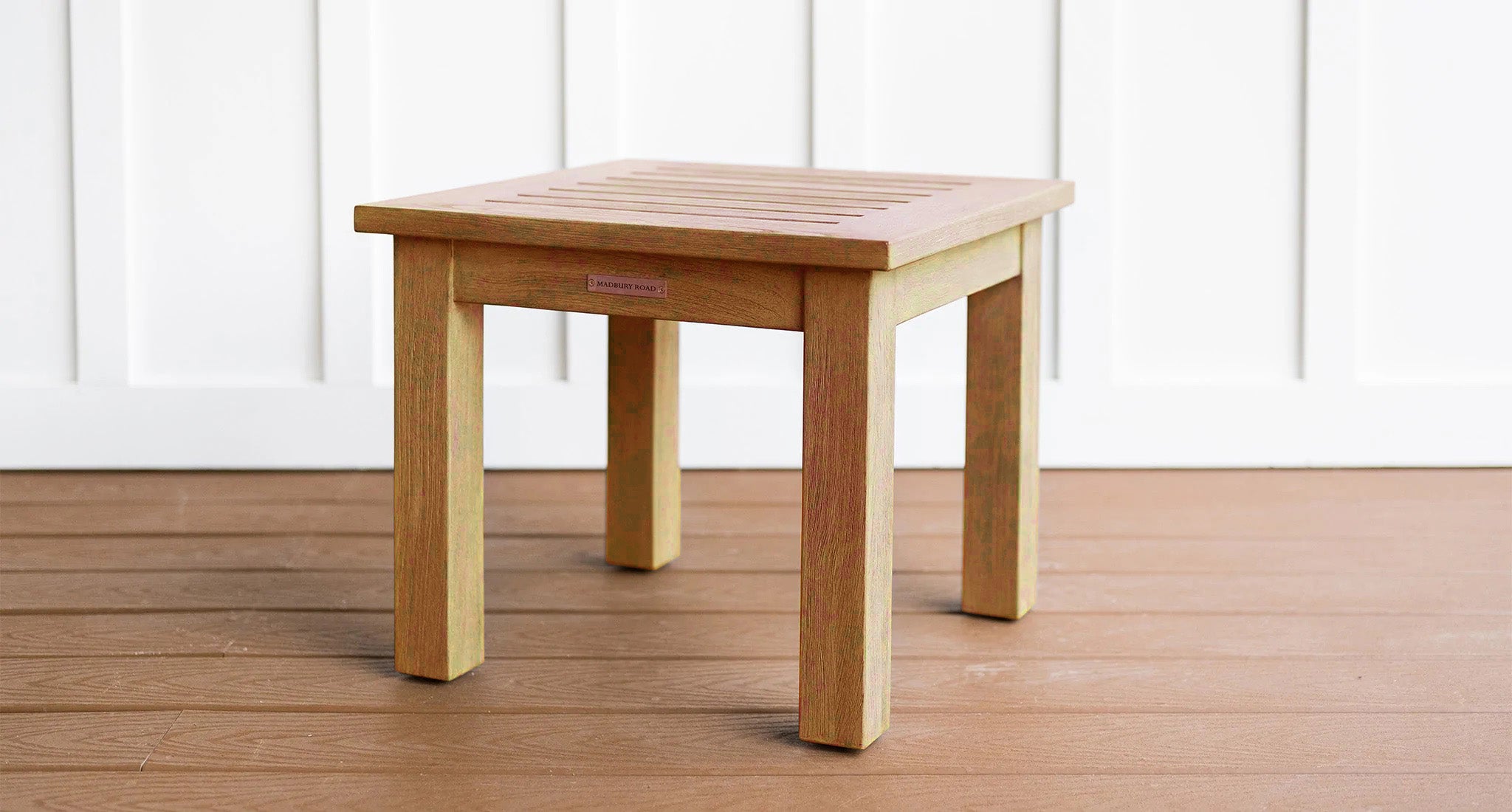
With such an impressive reputation, it’s no surprise that teak wood has become the subject of many myths and misconceptions. In this section, we aim to debunk two common myths about teak wood: that all types of teak wood are susceptible to rot and that teak wood requires regular maintenance to prevent rot.
By examining the facts and dispelling these myths, we can gain a better understanding of the true nature of teak wood and its incredible durability.
Myth: All Types of Teak Wood Are Susceptible to Rot
Contrary to popular belief, not all types of teak wood are prone to rot. In fact, teak wood is well-known for its remarkable durability and resistance to rotting. Numerous types of teak wood are available, including:
-
Burmese teak
-
Indonesian teak
-
Indian teak
-
African teak
-
Plantation teak
There are also different grades of teak wood, such as Grade A, Grade B, and Grade C.
The quality of teak wood varies among these types, with factors such as extractives, lignin content, water resistance, and physical strength and durability contributing to the rot resistance of various types of teak wood. The origin of teak wood does not significantly impact its resistance to rot, as teak wood is generally resistant to rot due to its inherent protective oils.
Myth: Teak Wood Requires Regular Maintenance to Prevent Rot
Another common myth is that teak wood requires regular maintenance to prevent rot. In reality, teak wood’s natural oils and silica content make it robust and long-lasting, requiring very little maintenance to prevent decay.
Teak wood’s low-maintenance nature is one of its most appealing qualities, especially for those who want to enjoy beautiful, durable furniture without the hassle of constant upkeep. So, rest assured that your teak wood furniture will stand the test of time, even with minimal maintenance.
The Lifespan of Teak Furniture

Having discussed the factors contributing to teak wood’s resistance to rot and dispelled common myths about its decay susceptibility, we’ll now analyze the lifespan of teak furniture. Given its outstanding durability and strength, teak wood, with appropriate care and maintenance, can endure for decades, if not centuries.
In this section, we will delve into the longevity of teak furniture, both for outdoor and indoor use, and discover how investing in teak wood furniture can provide you with a lasting and beautiful addition to your home or outdoor space.
Outdoor Teak Furniture
Teak wood’s durability and resistance to rot make it an excellent choice for long-lasting outdoor furniture. Its high oil content repels water and prevents deterioration like warping, rotting, or mildew growth. Teak wood’s inherent qualities make it highly resistant to decay and pests, making it a popular selection for outdoor furniture that requires minimal maintenance.
The average lifespan of outdoor teak furniture is believed to be 15+ years, with some reports suggesting a lifespan of 25 to 30 years or even longer. Factors that may affect the longevity of teak furniture used outdoors include:
-
Exposure to pollutants such as salt-water vapor and chemicals in rainwater
-
Regular cleaning and maintenance
-
The local climate
-
The quality of the teak wood itself
Indoor Teak Furniture
Teak furniture, a popular choice for indoor and outdoor furniture, can last a lifetime with minimal maintenance as it naturally resists rot. This makes it an ideal choice for long-lasting teak furniture indoors that requires little care. This durable and beautiful addition to your home ensures that your furniture requires minimal attention over time.
Teak wood’s remarkable resistance to damage and decay ensures that your indoor teak furniture will maintain its beauty and structural integrity for generations to come. With proper care and attention, your investment in high-quality teak wood furniture will continue to bring warmth, elegance, and timeless style to your home.
How to Maintain and Protect Your Teak Furniture
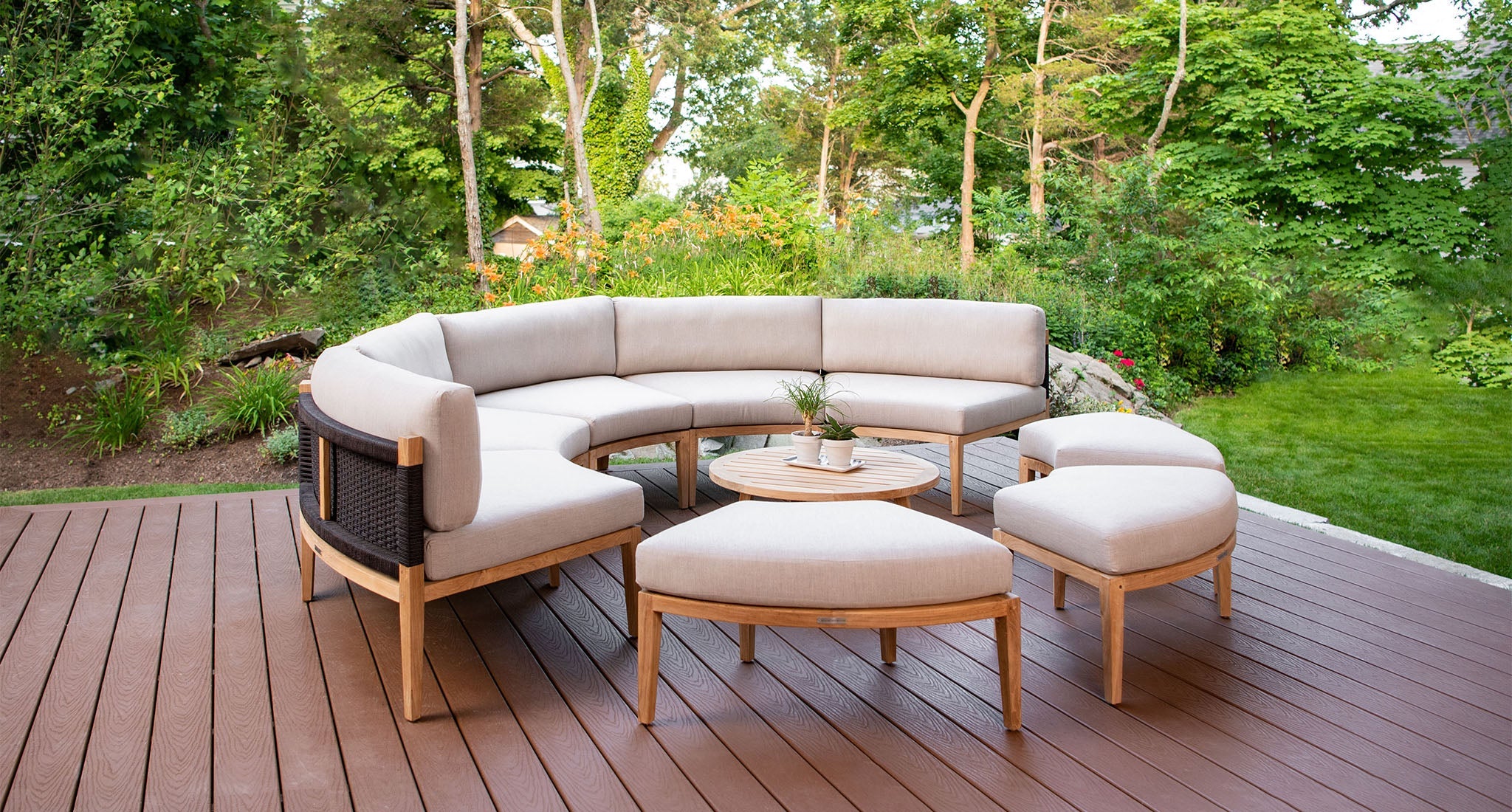
We will delve into the optimal practices for cleaning and safeguarding your teak furniture to guarantee its long lifespan in this part. Although teak wood naturally resists rot and decay, appropriate care and upkeep can bolster its durability and preserve its aesthetic appeal.
Whether you have indoor or outdoor teak furniture, make sure to follow these simple guidelines to keep your teak wood looking its best for years to come.
Cleaning Teak Furniture
To maintain the condition of teak furniture, it is recommended to give it a light clean at the end of each season to remove debris and ensure it remains in optimal condition. For indoor use, occasional wipe-downs with a soft cloth to remove dust and dirt should suffice.
For more thorough cleaning, a mild soap and water solution, teak cleaner, or a mixture of warm water, washing-up liquid, and a small amount of liquid bleach are recommended to clean teak furniture. To remove stubborn stains, a toothpaste applied in a circular motion with a toothbrush can be effective.
Always avoid using a pressure washer on teak furniture, as it can cause damage to the wood.
Applying Teak Sealer and Protector
Teak sealer and protector can be used to preserve the wood’s natural color and protect it from weathering. Applying teak sealer and protector is an essential step in preserving the wood’s natural beauty and ensuring its longevity.
For best results, apply the teak sealer in thin, even coats using a brush or roller. To ensure the longevity of your teak furniture, it is recommended to reapply the teak sealer on an annual basis.
Teak Wood in Boat Building and Residential Decking

Teak wood, with its durability and rot resistance, is an excellent choice for diverse applications including boat building and residential decking. In this part, we will investigate further into the utilization of teak wood in these fields and learn about the reasons for its popularity.
From boat decks to backyard patios, teak wood provides an attractive and durable solution that can withstand the elements and maintain its beauty for years to come.
Boat Building
Teak wood is a popular choice for boat building due to its natural resistance to rot and water damage. Its high oil content, tight grain, and impressive tensile strength provide a less slippery surface compared to other materials such as aluminum and fiberglass.
For centuries, teak wood has been employed in boat building due to its remarkable durability and lightweight. Its high oil and resin content make it an ideal material for boat construction, and it continues to be a sought-after material for this purpose today.
Residential Decking
Teak wood’s durability and resistance to rot make it a popular choice for residential decking. Its high rubber and oil content allow it to last for generations without the need for chemical treatments or heavy irrigation.
In addition to its incredible durability, teak wood provides a non-skid surface that makes it an attractive and safe choice for residential decking projects. With proper care and maintenance, a teak wood deck can provide a beautiful and functional outdoor space for many years to come.
Environmental Impact of Teak Wood Production
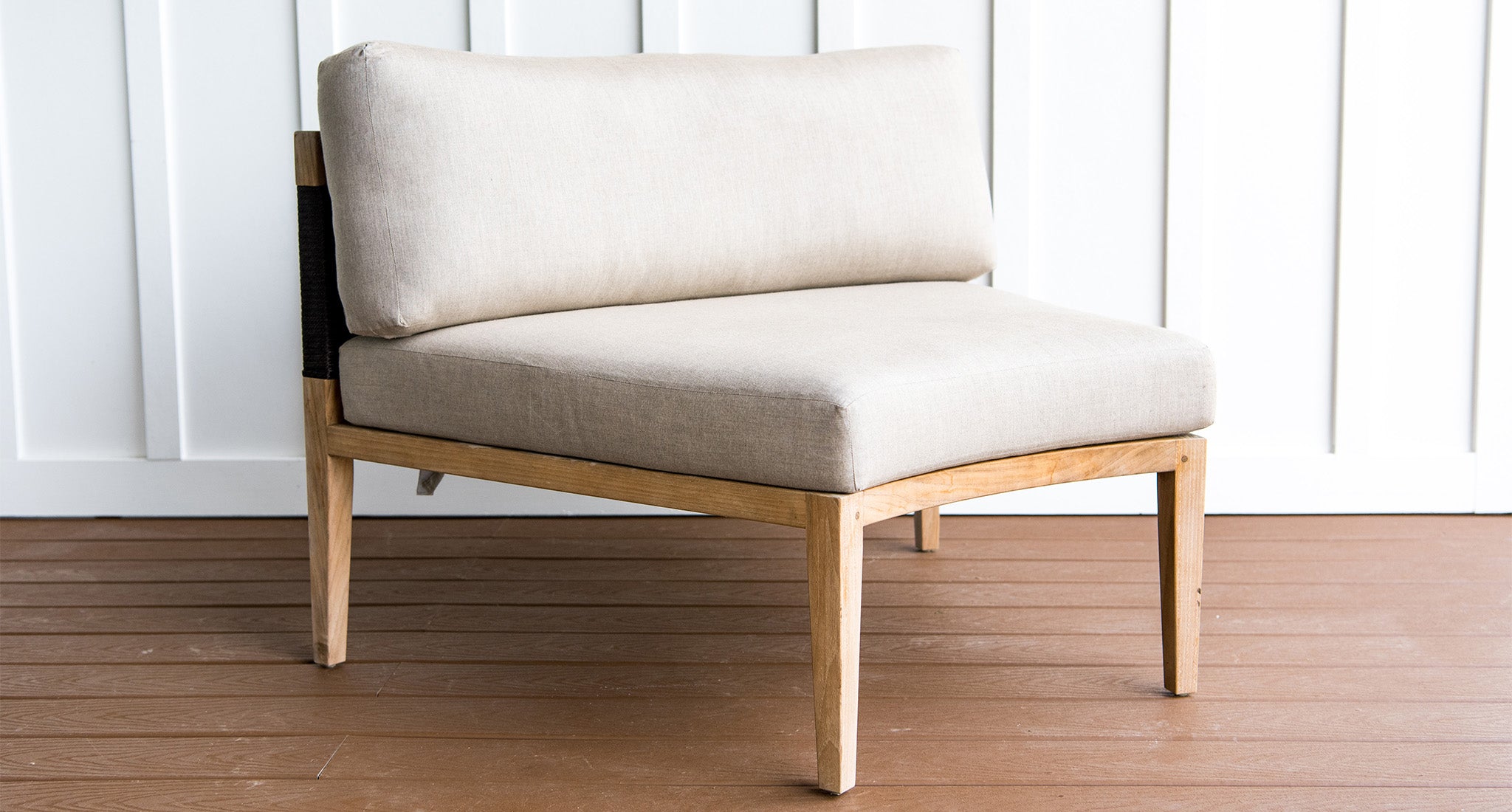
Teak wood’s popularity and demand have led to concerns about its environmental impact, particularly in terms of deforestation and degradation of natural teak forests due to indiscriminate and unmanaged cutting.
In this part, we will scrutinize the environmental implications of teak wood production and highlight the significance of legal plantations and sustainable harvesting methods.
By sourcing teak wood from legal plantations and practicing sustainable harvesting methods, we can help protect the environment and ensure the continued availability of this valuable resource.
Legal Plantations and Sustainable Harvesting
Legal plantations and sustainable harvesting practices are critical to guarantee that teak wood production does not have a deleterious environmental effect. Sustainable harvesting practices aid in making sure that teak forests are managed judiciously and that the environment is not adversely affected.
Compliance with the legal requirements for teak wood plantations, such as obtaining permits or licenses for planting and harvesting, adhering to forestry laws and regulations, and participating in wood legality verification systems, ensures the legality and sustainability of teak wood plantations.
Teak Wood Alternatives
While teak wood is a beautiful and durable material, it is essential to consider environmentally friendly alternatives that offer similar durability and resistance to rot. Some alternatives to teak wood include:
-
PVC decks
-
Mahogany
-
White cedar
-
Flexi teak
-
Marine maple
-
Ekki
-
Lignia
-
Garapa
-
Cambara
-
Cork
By exploring these alternatives, we can help reduce the demand for teak wood and lessen the potential environmental impact of its production. Choosing the right material for your needs, while keeping sustainability in mind, is an essential step in maintaining a healthy and balanced ecosystem.
Choose A High-Quality Teak In Madbury Road Today!
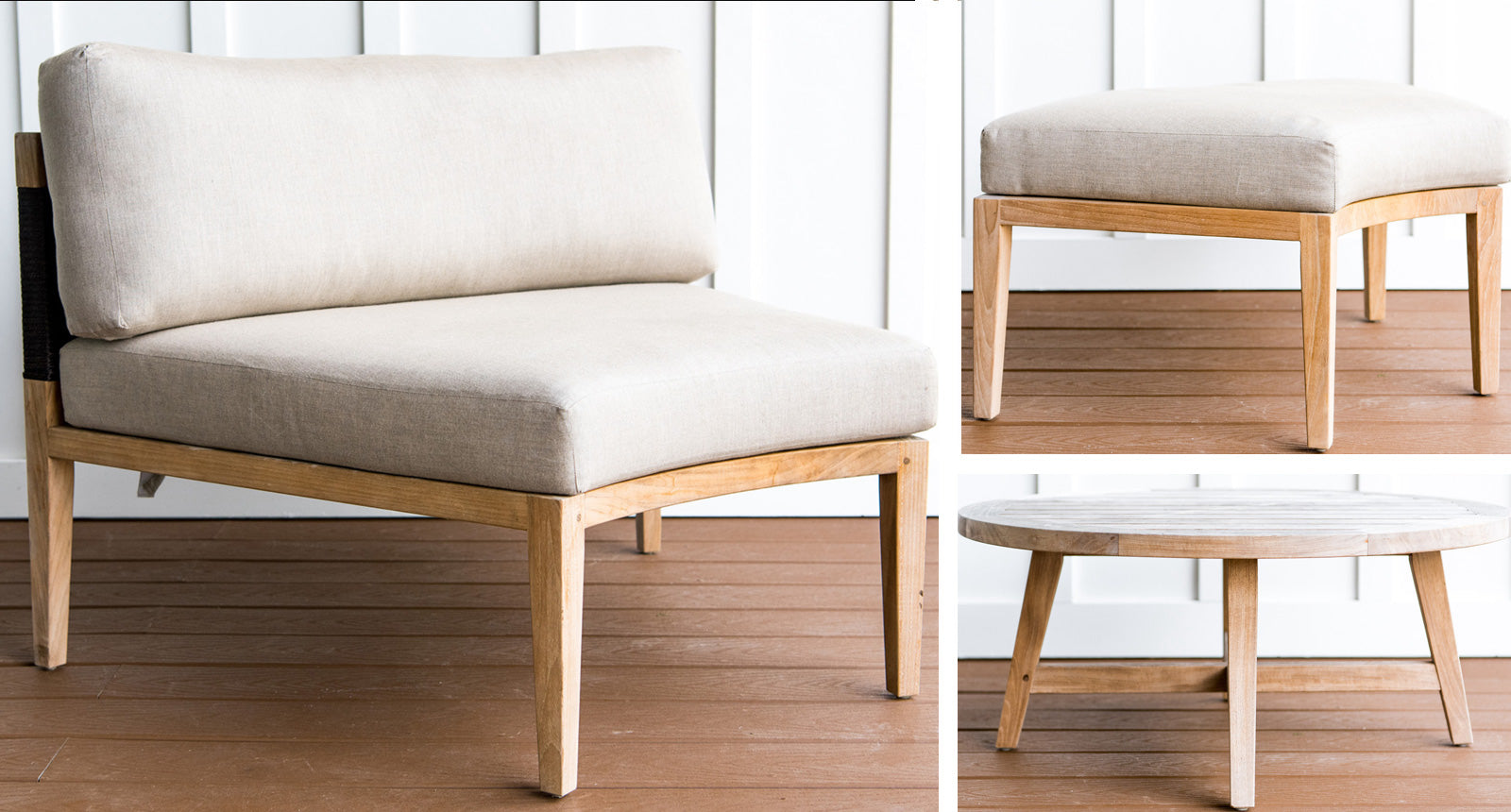
Investing in high-quality teak wood furniture, such as teak outdoor garden furniture, not only provides you with a beautiful and durable addition to your home or outdoor space but also supports sustainable practices that protect our environment.
Don’t wait any longer to experience the timeless elegance and incredible durability of teak wood. Choose a high-quality teak in Madbury Road today and enjoy the lasting beauty and functionality it brings to your life.
Summary
In conclusion, teak wood’s remarkable resistance to rot, incredible durability, and timeless beauty make it a sought-after material for both indoor and outdoor furniture, boat building, and residential decking. By understanding its unique properties, debunking common myths, and embracing sustainable practices, we can appreciate the true value of teak wood and make informed choices that benefit both our homes and the environment.
Frequently Asked Questions
Does teak wood rot easily?
Thanks to its high content of rubber and oil, teak wood has a strong natural resistance to rotting and is virtually immune to damage caused by moisture, weather, pests or acids. Teak requires no extra treatments or finishes to remain in great condition for generations.
What are the negatives of teak?
Teak is an expensive hardwood that is becoming harder to obtain due to declining natural resources, making it a costly investment.
What happens to teak over time?
Over time, teak furniture will naturally fade from its honey-brown hue to a beautiful silvery-gray patina due to oxidization and exposure to moisture. This weathering process is purely cosmetic and does not affect the integrity of the wood.
How long does it take for teak to fade?
Teak furniture will gradually turn from golden brown to a light silvery grey as the pigments in the wood's surface layer begin to fade. This weathering process can take from 6 months to 2 years depending on environmental factors.
How long can outdoor teak furniture last?
Outdoor teak furniture can last up to 15+ years, and in some cases even as long as 25-30 years.

